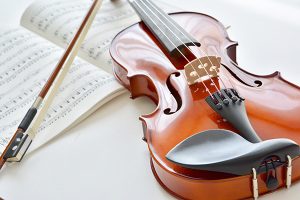
Here are some practicing tips for fostering a positive music lesson, which will help ensure a successful music education experience. It is important to note that students require the support of their parents and family members in assisting them to reach their goals including maintaining a consistent practice routine. Parents will need to sit with younger children to practice.
Don’t wait until you feel inspired to practice. Just make it part of your daily routine like brushing your teeth, doing chores or doing homework etc. You will get inspired after you’ve made progress! There is a saying “Practice Makes Perfect!” It is important that students develop the discipline to make practicing part of their daily routine in order to achieve success.
Consistent, dedicated practice is essential to success. A good idea is to have a practice chart where you can track your minutes, perhaps in your music diction book, that both parents and teachers can see. It’s like counting your steps for a fitness goal!
Try to find a time of the day that doesn’t compete with anything else so as to be able to consistently make this music practice time!
How much time should students practice every day? The answer is somewhat dependent on the student’s age and their goals. For a very young child of 4 or 5 years old, perhaps 10 minutes a day, for an advanced musician with professional aspirations, perhaps 10 hours a day! Here is a general guideline to start with, however please discuss with your teacher, keeping in mind that every child is different and every student has a different comfort level for how long they can maintain concentrated practice. In some cases, students may wish to break up their practice sessions into smaller amounts and practice twice a day.
- 4-5 years old 10 minutes a day
- 6-7 years old 15 minutes a day
- 8-9 years old 20 minutes a day
- 10 – 12 years old 30 minutes a day
- 13 years and up 45 minutes to an hour a day.

What should I practice? This should be answered by your instructor. Often an instructor will make notes in a note book or the music book, however here are some general guidelines:
1) Warm up with techniques such as finger exercises, scales, chords & arpeggios.
2) Practice repertoire, keeping special attention to areas that your instructor has mentioned such as notation (correct notes), rhythm (counting evenly with a metronome), correct fingering, phrasing, dynamics etc.
3) Practice in sections. Start with the areas that require the most attention. It is a temptation to start with what you already know well. Leave that until the end as a reward. Practice your pieces in small sections, such as every phrase or every four measures or every line, multiple times in a row and in different ways. Perhaps the 1st time watch to use correct fingering and say the note names to reinforce your note reading, 2nd time try counting the rhythm aloud as you play 1 + 2 + 3 + etc. and then the 3rd time concentrating on all the dynamics and phrasing.
4) At the end of the practice session, students can have some fun playing songs they have learnt. Also, this is a good time to experiment with their instrument, exploring different sounds and creating melodies of their own!
Keep in touch with your child’s teacher. Regular communication will ensure that you, your child and your child’s teacher are mutually aware of how things are progressing. Encourage your child to discuss their lesson with you and to demonstrate works in progress as well as polished pieces. Provide opportunities for your child to listen to music. Listening to radio broadcasts, recordings, YouTube videos, web broadcasts, and live performances can inspire your child in meaningful ways.
The more a student is inspired the more they will want to practice, and remember, Practice Makes Perfect!


